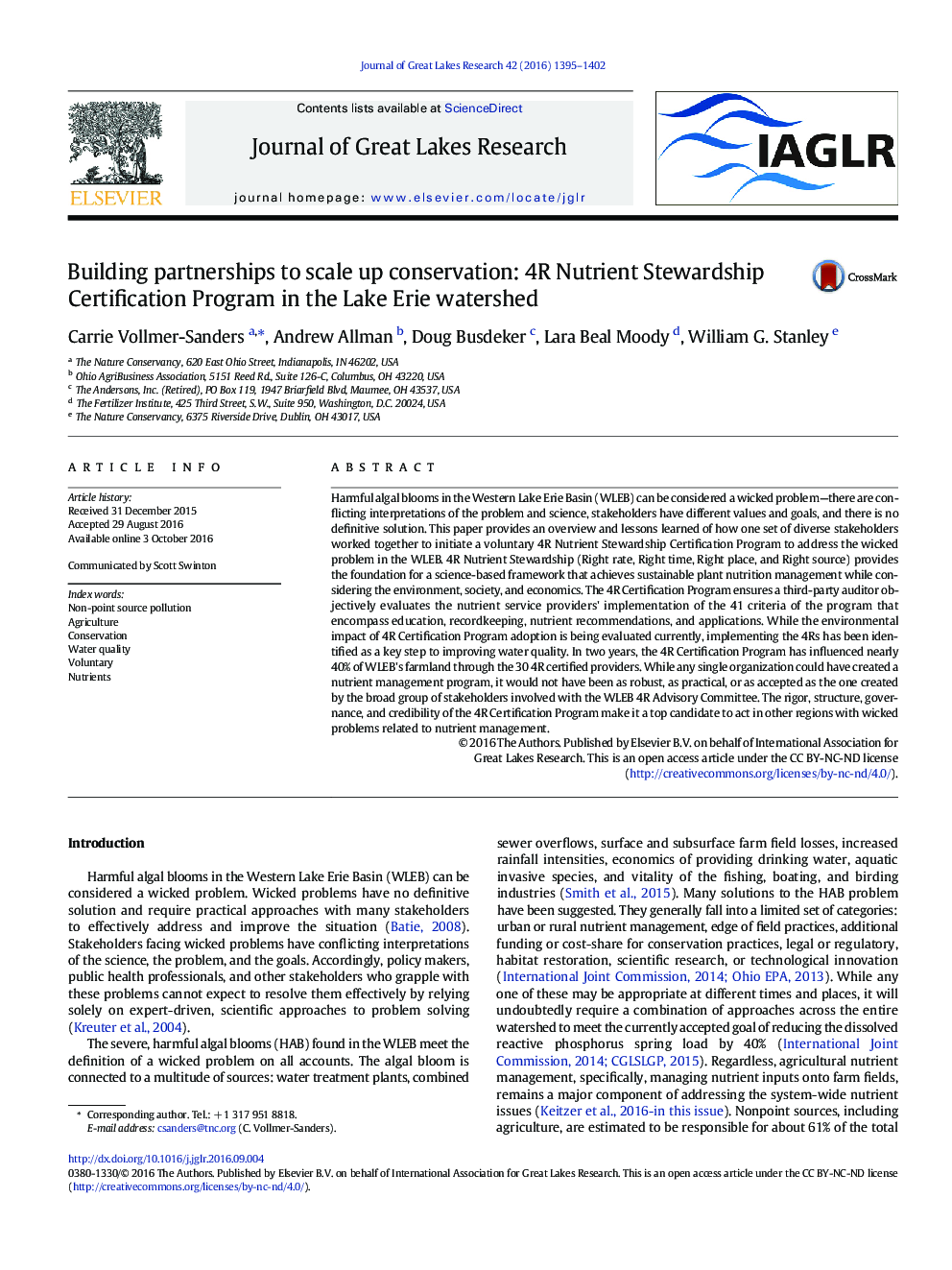| Article ID | Journal | Published Year | Pages | File Type |
|---|---|---|---|---|
| 5744708 | Journal of Great Lakes Research | 2016 | 8 Pages |
Harmful algal blooms in the Western Lake Erie Basin (WLEB) can be considered a wicked problem-there are conflicting interpretations of the problem and science, stakeholders have different values and goals, and there is no definitive solution. This paper provides an overview and lessons learned of how one set of diverse stakeholders worked together to initiate a voluntary 4R Nutrient Stewardship Certification Program to address the wicked problem in the WLEB. 4R Nutrient Stewardship (Right rate, Right time, Right place, and Right source) provides the foundation for a science-based framework that achieves sustainable plant nutrition management while considering the environment, society, and economics. The 4R Certification Program ensures a third-party auditor objectively evaluates the nutrient service providers' implementation of the 41 criteria of the program that encompass education, recordkeeping, nutrient recommendations, and applications. While the environmental impact of 4R Certification Program adoption is being evaluated currently, implementing the 4Rs has been identified as a key step to improving water quality. In two years, the 4R Certification Program has influenced nearly 40% of WLEB's farmland through the 30 4R certified providers. While any single organization could have created a nutrient management program, it would not have been as robust, as practical, or as accepted as the one created by the broad group of stakeholders involved with the WLEB 4R Advisory Committee. The rigor, structure, governance, and credibility of the 4R Certification Program make it a top candidate to act in other regions with wicked problems related to nutrient management.
